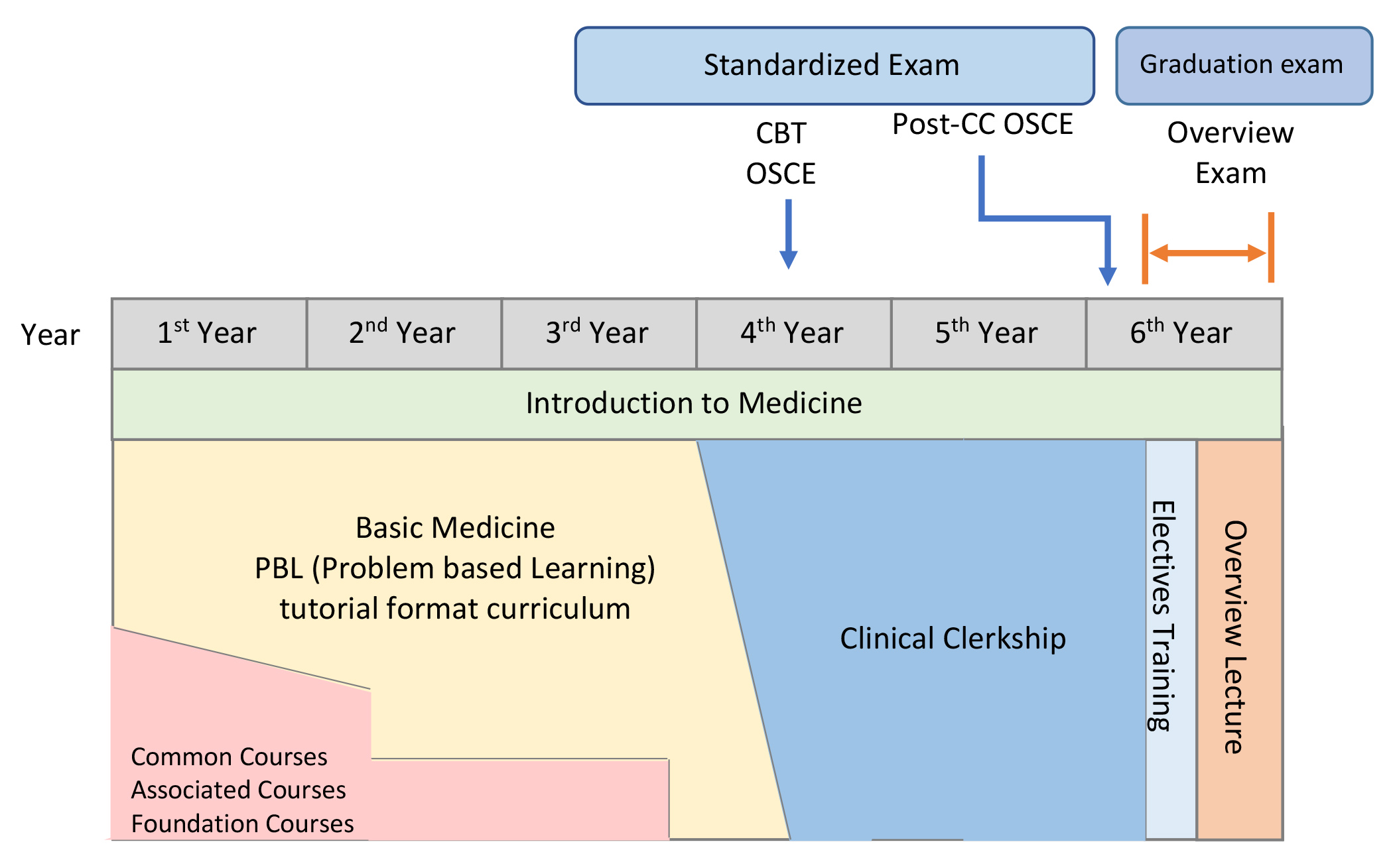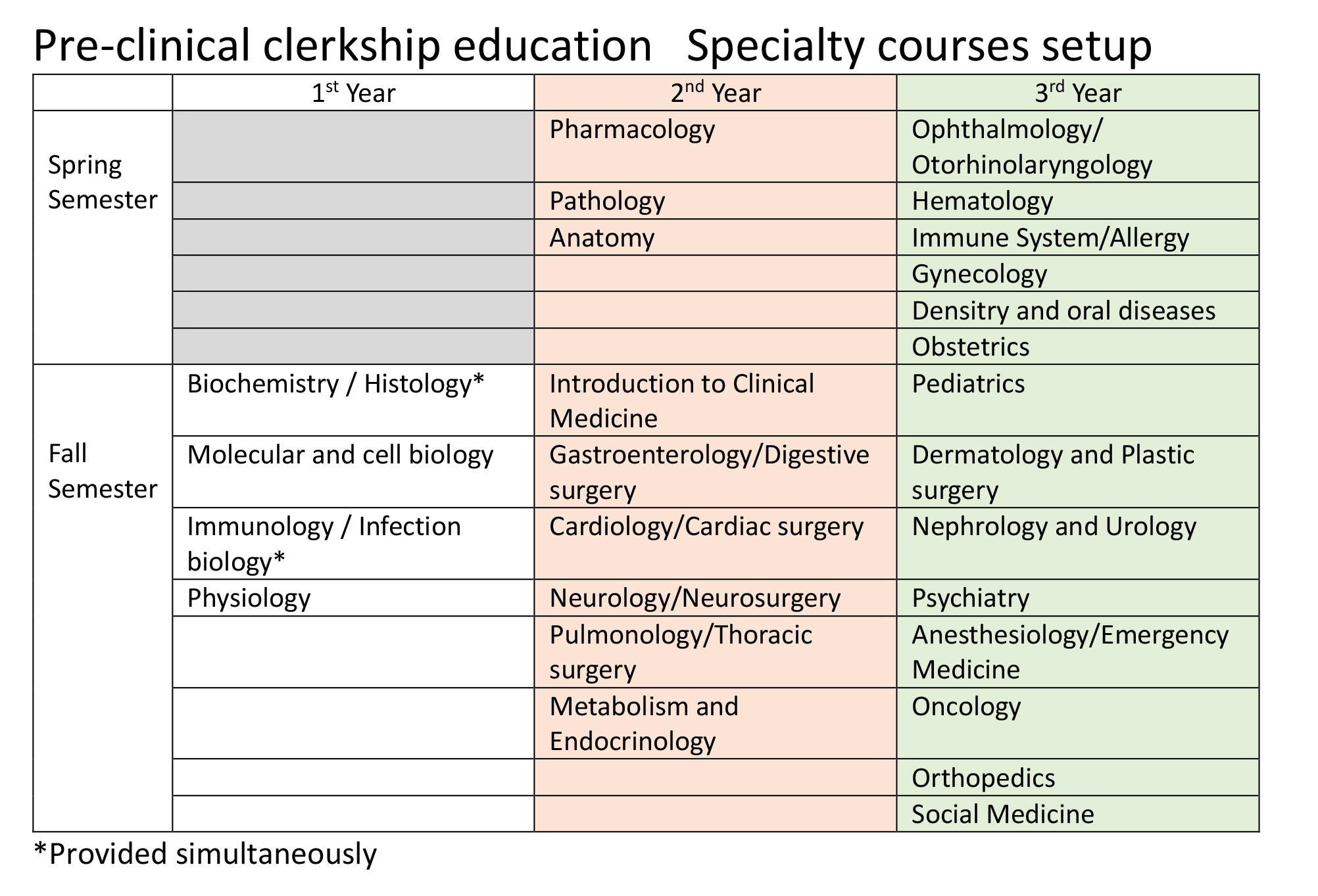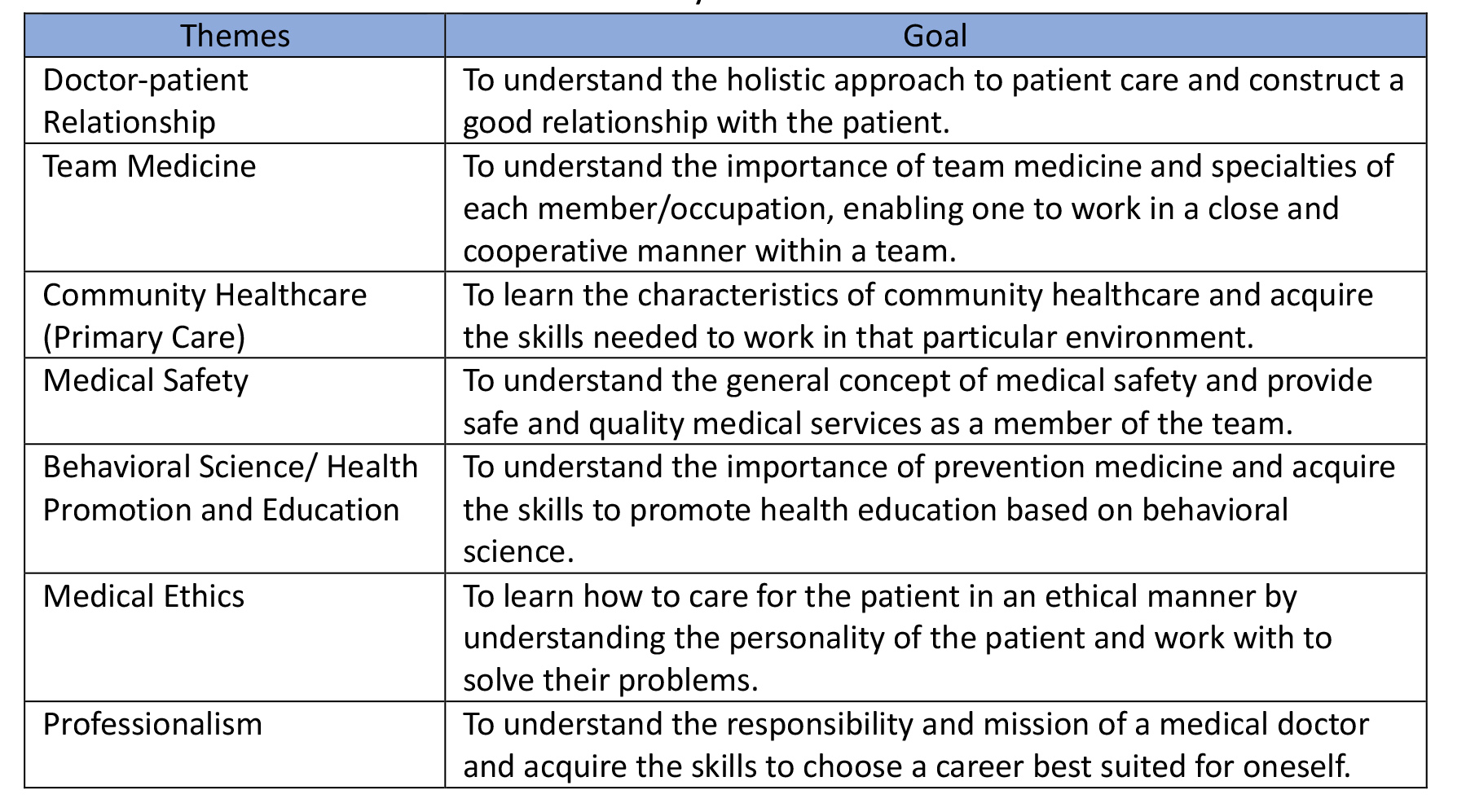JP / EN
Characteristics of Curriculum
Characteristics of our medical education can be explained by the three main pillars of the curriculum, which are 1) assimilation curriculum divided by organ system with a PBL (Problem based Learning) tutorial format as the foundation, 2) clinical clerkship, and 3) introduction to medicine.

The first main pillar of our education system is the assimilation curriculum divided by organ system with a PBL (Problem based Learning) tutorial format as the foundation, in which it starts from the first year and ends in the 3rd year before the start of clinical clerkship.
The second main pillar is the clinical clerkship. Starting from October of the fourth year, the program continues until June of the 6th year, where the students are trained by participating in various clinical clerkship settings as one of the members of the medical team.
The third main pillar is “Introduction to medicine”. In order to learn various areas of medicine which cannot be covered by the assimilation curriculum, medical introductory courses are provided throughout the six years of the program, in which the students are taught in a systematic way.
Assimilation curriculum divided by organ system with a PBL (Problem based Learning) tutorial format as the foundation

PBL tutorial is a problem-based learning approach in which the students discuss with each other in small teams and apply the knowledge they acquired in classes to solve actual clinical cases. The students participate in small study groups assisted by a tutor, the curriculum integrates lectures with hands-on training.
From the students’ first year to their third year before the start of clinical clerkship, PBL tutorial format is incorporated into many of the general and clinical medicine courses, enabling an education system that can integrate all three of basic, clinical, and social medicine. This format not only enables the students to acquire problem solving skills and lifetime study habits but also to hone their communication skills and teamwork by organizing one’s thought process and successfully conveying them through group discussions.

Clinical Clerkship (Participation based clinical training)
Our curriculum has incorporated clinical clerkship (CC) in order for the students to participate in various clinical settings as a member of the medical team, which differs from the traditional observation style training. CC is divided into two phases, where the first half is Phase I and the second half is Phase II.
In Phase I, the students rotate in the core clerkship (internal medicine, surgery, obstetrics and gynecology, pediatrics, and psychiatry) for 4 weeks at the university hospital. Phase II is an electives clerkship where the students can train in local clinics under general practitioners and/or select and train in specialties of their interest.
By participating in the training as a member of the medical team, the students are able to acquire the necessary clinical skills step-by-step.
Medical introductory courses
Medical introductory course was implemented as the final pillar of the curriculum, where students are able to systematically acquire clinical skills necessary for medical practitioners that cannot be covered by the assimilation curriculum. The course allows the students to learn the 7 themes that are important for a medical practitioner: doctor-patient relationship, team medicine, community healthcare (primary care), medical safety, behavioral science/health promotion, medical ethics, and professionalism.










